Introduction
Online Shipping
Shipping occurs after customers after products are bought, and the business physically moves the merchandise from the point of purchase to the customers’ destination. Online shipping is an integral part of eCommerce since it fulfills the supply chain. The primary objective of online shipping is to deliver products to customers quickly and efficiently. Shipping can take the forms of ground and freight deliveries depending on the location and preference of customers. Online shipping is essential to today’s businesses since it plays a crucial role in improving customers’ experience with the company’s brand (Shi et al., 2020). Online shipping products target demographic markets comprising of customers who value convenience and high-quality products. Online shipping is influenced by supply and demand forces that show the number of products and changes in the freight rate.
When and Why Online Shipping Became Popular
Online shipping became popular during the outbreak of the COVID-19 pandemic. Safety concerns during the pandemic coupled with the lockdowns and travel restrictions necessitated businesses and customers to resort to online shipping as an intervention. During the pandemic, the increase in digital shopping sparked a need for companies to increase their investments in logistics and supply chains to meet the growing demand for online shipping (Xu et al., 2021). Of course, investment in logistics acted as a powerful differentiation tool for brands. Companies that invested in online shipping increased their profit margin by staying ahead of their competitors.
Demand Determinants of the Commodity
Customers’ tastes and preferences played a crucial role in shaping the demand and supply for online shipping by determining the willingness of customers to buy a product. The demand for online shipping during the COVID-19 pandemic was more significant as the preferences for customers changed to align with the new way of doing business (Meyer et al., 2022). Likewise, the demand for online shipping increased during the pandemic due to the pressure of advertisement by retailers. The changes in the demand for online shipping created businesses to compete for customers based on prices.
The second factor that shaped the demand for online shipping was the income level of customers. Customers with higher income develop a greater demand for online shipping products. When drawing the demand curve for products, companies need to take the demand curve as a constant to make accurate business projections. Increased income causes a corresponding rise in the purchasing power of customers (Xu et al., 2021). Therefore, the income levels of customers during the pandemic influenced their ability to purchase shipping products.
Changes in the prices of related products, especially those of substitutes, shaped the demand for online shipping products. Customers’ drive to purchase a product depends on the prices of the commodity and the availability of substitutes. During the pandemic, successful online shipping businesses capitalized on the increasing demand for the products by pricing their brands relative to competitors (Shi et al., 2020). The change in the prices of substitute products changes the entire demand curve for online shipping brands.
Customer expectations played a significant role in influencing the demand for online shipping products by raising standards. Customer expectations regarding how commodity prices will change in the future influences demand (Michail & Melas, 2021). For example, customers anticipated that the restrictions on movement would increase online shipping prices. This anticipation led customers to increase their purchases at the initial stages of the outbreak of COVID-19.
The number of consumers in the market adds to the demand for a product at various possible prices. Retailers strive to find new markets for their products to increase the number of customers purchasing that brand. The increase, in turn, gives retailers control over prices for that product in the market segment. Online shipping businesses focused on increasing the market share for their products to raise the demand for brands.
Supply Determinants of the Commodity
Supply is the number of quality goods that manufacturers and retailers plan to sell in the market. The supply of online shipping products is influenced by technology that increases the efficiency of producing more output using the same inputs. For example, just-in-time technology allows manufacturers to produce goods well ahead of the delivery time using fewer inputs (Michail & Melas, 2021). This factor also enables suppliers to sell a given quantity at a lower price.
The input cost influences the supply of online shipping products by determining the cost of production. For instance, if online shipping companies raise their workers’ salaries, the cost will shift to consumers. An increase in the price of online shipping products reduces the demand for the brand as customers will seek alternatives. Thus, online businesses should adopt economies of scale to supply products at competitive prices.
Related goods’ prices in the marketplace determine the quantity and quality of online shipping products supplied. For instance, if competing brands improve the quality of their prices, the demand for that product will increase. Similarly, customers will favor quality products that are priced relatively cheaper than those of consumers. Online shipping industries focused on increasing the supply of their products by improving quality and lowering prices during the pandemic to increase the market share and revenue.
Other factors shaping the supply of commodities are the number of producers and customer expectations. If the number of producers in the market increases, the number of suppliers will increase. This increase intensifies competition for goods produced in the market and gives customers a higher bargaining power (Michail & Melas, 2021). The expectations of a shift in the availability of commodities impact the supply of such commodities. If customers expect the supply to decline in the future, they are likely to make more purchases at present.
Data
The COVID-19 pandemic disrupted maritime and air freight services due to canceled sailings, container shortages, port delays, and canceled flights. In the first half of 2020, the U.S. accounted for 85% of imports and exports trade (Xu et al., 2021). However, the volume grew by 9.5% in the second half of the year (Meyer et al., 2022). The increase in online shipping was due to an increase in the number of customer shopping inline to 73% in 2020 (Person & Naidu, 2021). Consumer buying habits considerably shifted in favor of online shipping products.
Additionally, the rise is attributed to the 18% increase in the number of people in online shipping. More than 70% of customers purchasing online shipping products cite that they were lured by convenience in the sector (Person & Naidu, 2021). The demand for online shipping products across the globe was estimated at $3.5 billion in 2020 (Person & Naidu, 2021). Higher-income causes a higher demand for products. Online shipping comprises normal products whose demand increases with the rise in income. Most customers are more likely to purchase well-established products when their income rises because they attribute them to high quality.
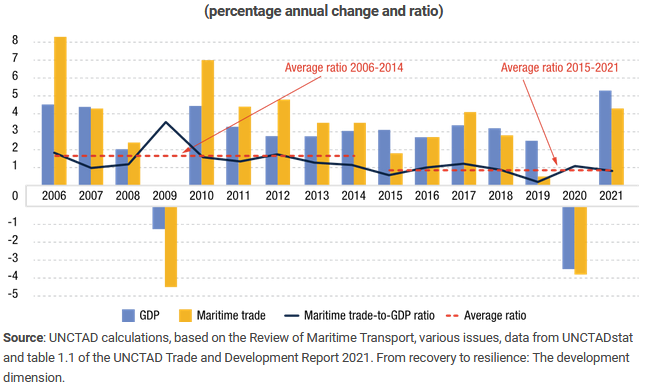
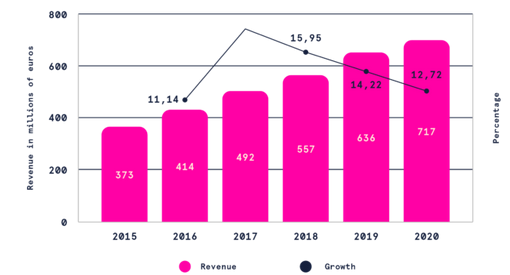
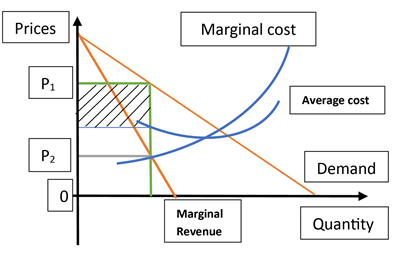
Analysis
The COVID-19 pandemic caused an unprecedented slowdown in online shipping at the pandemic outbreak. However, container freight rates surged as retailers and customers were encouraged to move to online sales. Demand in online shipping refers to the number of products that customers are willing to buy at set prices. Most businesses capitalized on the demand for online shipping by creating a need for purchasing products to fulfill customer needs in the marketplace.
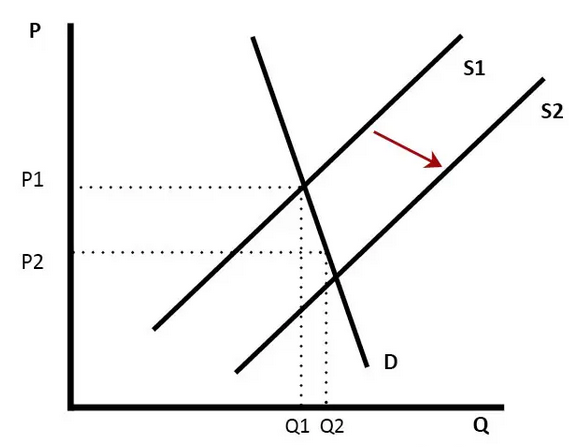
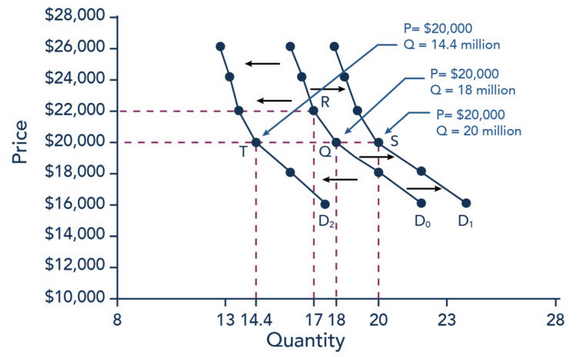
As non-price factors such as income increase, online shipping products’ supply also increases. The shift is due to the rise in the commodities that customers plan to sell in the marketplace to meet customers’ demands. The global rates for online shipping increased by almost $20000 in 2020 (Person & Naidu, 2021). This increase was due to global shipping prices, contributing to 50% of the total retail value (Meyer et al., 2022). Consumers’ wide application of just-in-time strategy saved on storage costs and made inline shipping companies increase their bottom line.
Conclusion
Online shipping comprises normal commodities greatly affected by changes in supply and demand. The popularity of the online shipping industry increased with the outbreak of the COVID-19 pandemic when customers changed their buying priorities. The supply and demand for online shipping products are influenced by non-price factors such as technology, the price of related products, and consumer expectations. Online shipping businesses mostly target customers who value high-quality products and convenience. I believe online shipping products are profitable for producers since its popularity and demand has increased. If I were producing the commodity, I would increase revenue by using strategic shipping options such as flat rate method to charge customers based on the quantity of goods.
References
Ecommerce shipping and Delivery: Statistics Trends in 2021. Nosto. (n.d.). Web.
Goulielmos, A. M. (2021). A microeconomic (vintage) model of a shipping company: A proposed depreciation strategy. Modern Economy, 12(8), 1185-1212.
Meyer, B. H., Prescott, B., & Sheng, X. S. (2022). The impact of the COVID-19 pandemic on business expectations. International Journal of Forecasting, 38(2), 529-544.
Michail, N. A., & Melas, K. D. (2021). Sentiment-augmented supply and demand equations for the dry bulk shipping market. Economies, 9(4), 171.
OpenStax. (n.d.). 3.2 Shifts in demand and supply for goods and services. Principles of Economics. Web.
Person, & Naidu, R. (2021). Shoppers expected to spend $4.2 TLN Online in 2021, squeezing supply chains. Reuters. Web.
Shi, S., Sun, J., & Cheng, T. C. E. (2020). Wholesale or drop-shipping: Contract choices of the online retailer and the manufacturer in a dual-channel supply chain. International Journal of Production Economics, 226, 107618.
Xu, L., Shi, J., Chen, J., & Li, L. (2021). Estimating the effect of COVID-19 epidemic on shipping trade: An empirical analysis using panel data. Marine Policy, 133, 104768.
